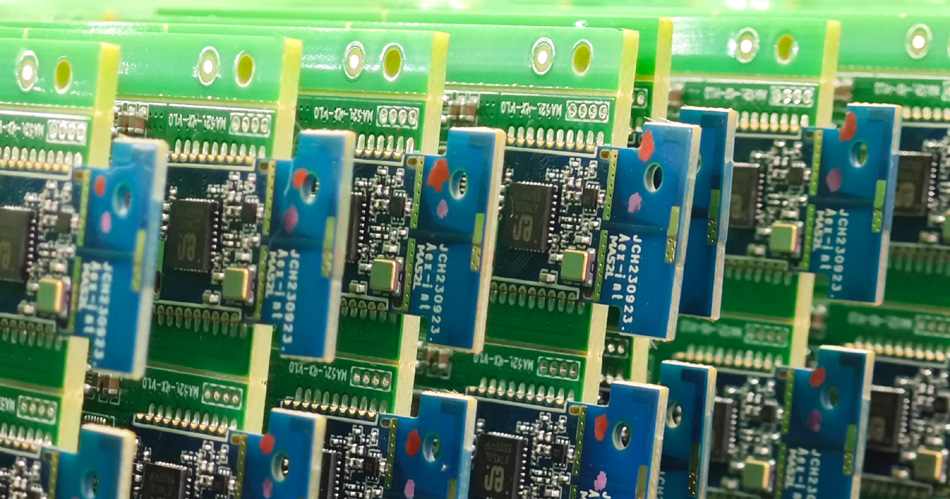- English
- Español
- Português
- русский
- Français
- 日本語
- Deutsch
- tiếng Việt
- Italiano
- Nederlands
- ภาษาไทย
- Polski
- 한국어
- Svenska
- magyar
- Malay
- বাংলা ভাষার
- Dansk
- Suomi
- हिन्दी
- Pilipino
- Türkçe
- Gaeilge
- العربية
- Indonesia
- Norsk
- تمل
- český
- ελληνικά
- український
- Javanese
- فارسی
- தமிழ்
- తెలుగు
- नेपाली
- Burmese
- български
- ລາວ
- Latine
- Қазақша
- Euskal
- Azərbaycan
- Slovenský jazyk
- Македонски
- Lietuvos
- Eesti Keel
- Română
- Slovenski
- मराठी
- Srpski језик
How to reduce the defective rate of PCBA products through quality management?
2025-08-08
In the PCBA processing process, reducing the defective rate of products is a key goal to ensure high-quality production and improve customer satisfaction. The increase in the defective rate will not only increase production costs, but also affect delivery efficiency. Therefore, the implementation of a comprehensive quality management system can effectively reduce the generation of defective products. This article will focus on how to reduce the defective rate of PCBA products through quality management, focusing on key strategies.

1. The importance of quality management in PCBA processing
Ensure product consistency
In PCBA processing, the precision and quality of each circuit board component are crucial. Through effective quality management, the factory can ensure that each batch of products meets the same quality standards, thereby avoiding rework and customer complaints caused by individual defects.
Reduce production costs
The reduction in defective rate means less rework, repairs and material waste. A rigorous quality management system can identify potential problems in a timely manner and reduce overall production costs through early corrective measures.
2. The main factors affecting the defective rate of PCBA products
Raw material quality
The quality of raw materials has a direct impact on the finished products of PCBA processing. If the quality of materials such as circuit boards and components does not meet the standards, the product may have problems such as poor soldering and short circuits during the production process. Therefore, strict control of the selection of material suppliers and the inspection of raw materials entering the factory is an important link to reduce the defective rate.
Production process control
In PCBA processing, the accuracy and stability of the production process are directly related to the yield of the product. For example, soldering temperature, soldering time, positioning of components, etc., every detail will affect the quality of the final product. Therefore, during the production process, the factory must ensure that all links are strictly implemented in accordance with the standards and tracked using real-time monitoring technology.
Personnel quality
The technical level and work attitude of the operators also have a significant impact on the quality of the product. By training production workers, improving their operating skills, and regularly strengthening quality awareness, product defects caused by human factors can be effectively reduced.
3. Key measures to reduce the defective rate through quality management
Implement a strict quality control system
The factory can implement quality management in every link of PCBA processing by establishing a comprehensive quality control system. This includes material inspection, process control, finished product inspection, etc. Factories can adopt quality management systems that meet international standards (such as ISO 9001) and conduct regular audits and optimizations.
Introducing automated and intelligent testing equipment
Automated and intelligent equipment can improve the accuracy and efficiency of testing. By using technologies such as automatic optical inspection (AOI) and X-ray inspection (X-Ray), factories can detect problems such as poor soldering and component misalignment in real time to prevent defective products from entering the next production link.
Strengthen data analysis of the production process
By collecting various data during the production process, factories can conduct quality analysis on different batches of products and identify weak links in production. Data analysis can help factories optimize production processes, adjust process parameters, and further reduce the defect rate.
4. Combination of continuous improvement and quality management
Regular review and feedback mechanism
Continuous improvement is one of the core concepts of quality management. PCBA factories should regularly review problems encountered during the production process, collect various feedback information, and formulate corresponding improvement plans. By continuously optimizing the production process and quality control system, factories can effectively reduce the generation of defective products.
Supply chain collaboration
Quality management of the supply chain is also one of the key factors in reducing the defect rate. Factories should work closely with suppliers to ensure that the quality of raw materials and components meets production requirements, and jointly solve quality problems in the supply chain to improve the overall quality of products.
Conclusion
By fully implementing quality management, PCBA processing companies can effectively reduce the defect rate, thereby improving product quality, reducing production costs and improving customer satisfaction. Through strict raw material control, production process optimization and the application of automated testing, factories can implement quality management in every detail of production. The combination of continuous improvement and supply chain collaboration will further promote the improvement of the quality level of PCBA factories and ensure the competitiveness of products in the market.
-
Delivery Service






-
Payment Options









